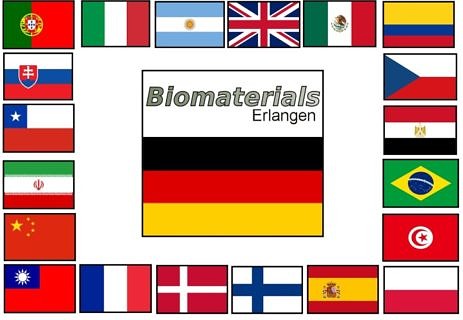Wir sind wirklich international: Mehr als 30 Beiträge unseres Lehrstuhls wurden bisher im Jahr 2020 veröffentlicht – mit Kollegen aus 20 Ländern
In der ersten Hälfte des Jahres 2020 haben unsere Forschungsaktivitäten in Zusammenarbeit mit Kollegen aus 20 Ländern zu 33 Publikationen geführt (siehe unten). Wir sind sehr stolz darauf, mit einer so großen Zahl angesehener Kollegen und Projektpartner aus der ganzen Welt zusammenzuarbeiten. Wir freuen uns darauf, diese vielen internationalen Projekte fortzusetzen und unser Netzwerk von internationalen Mitarbeitern weiter auszubauen.
Zein‐Based Electrospun Fibers Containing Bioactive Glass with Antibacterial Capabilities.
Synthesis and characterization of rubidium-containing bioactive glass nanoparticles.
Nanofibrous membranes as smart wound dressings that release antibiotics when an injury is infected.
Electrophoretic Deposition of Copper(II)–Chitosan Complexes for Antibacterial Coatings.
A Structural Comparison of Ordered and Non-Ordered Ion Doped Silicate Bioactive Glasses.
Re-engineering Artificial Neoplastic Milieus: Taking Lessons from Mechano- and Topobiology.
Rational Design of a Triple-Layered Coaxial Extruder System: in silico and in vitro Evaluations Directed Towards Optimizing Cell Viability, Int. J. Bioprint. 2020, accepted.
Calorimetric approach to assess the apatite-forming capacity of bioactive glasses, J, Non-Cryst. Solids 2020, accepted.

